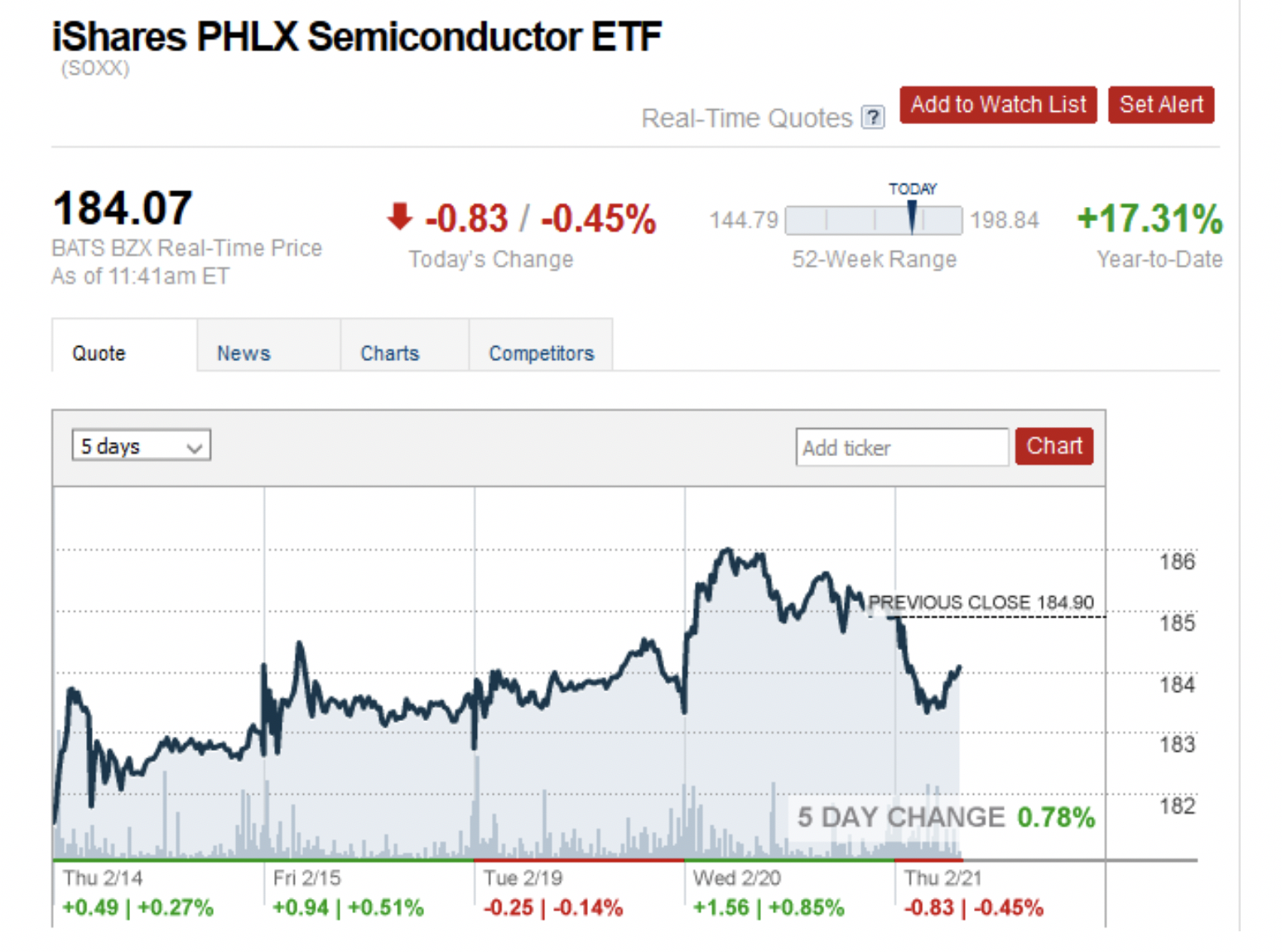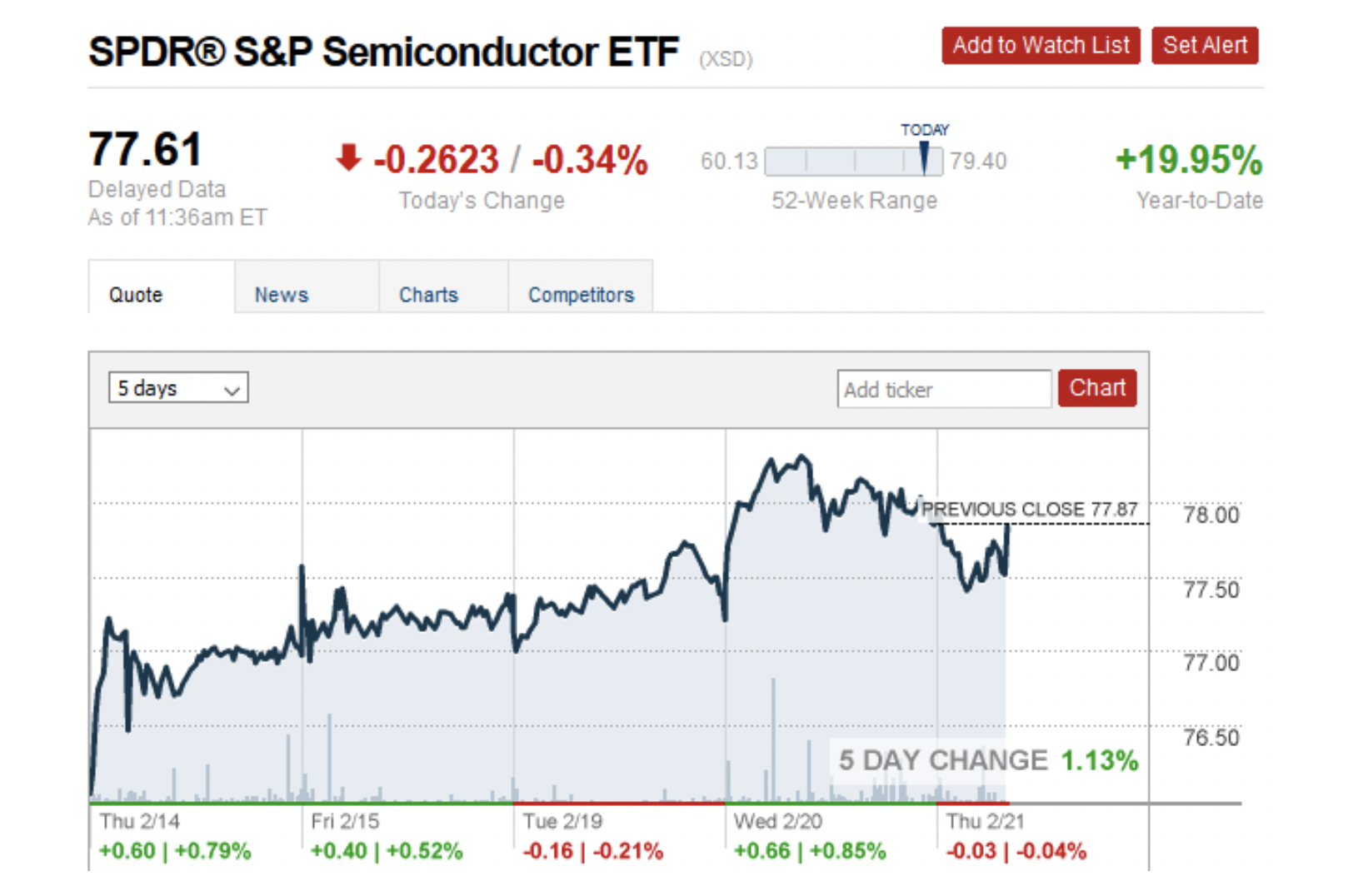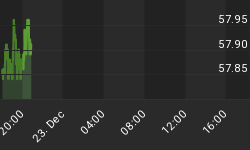The Semiconductor sector has been on a tear lately and easily one of the best performing sectors in the equities market so far this year. The enduring performance by the sector has come as a surprise to many experts who have been predicting a slowdown after several years of outstanding growth.
According to numerical navel gazers, Gartner Inc., the semiconductor market grew an impressive 13.4 percent Y/Y in 2018, nearly doubling the firm’s earlier forecast of 7.5 percent.
Worldwide semiconductor revenue totaled $476.7 billion with vendors recording gains in both unit sales and ASP (Average Selling Prices). The memory market was once again a standout performer with the industry accounting for 34.8 percent of total semiconductor revenues after posting a blistering growth clip of 27.2 percent—the fastest in the semis sector thanks to a booming DRAM market.
Semis outlook
Gartner expects good long-term growth for the sector with CAGR of 5.1 percent for 2017-2022, nearly double the CAGR of 2.6 percent for 2011-2016. The firm, however, has forecast rather weak revenue growth of 2.6 percent in 2019 followed by 8 percent in 2020 then negative growth in 2021.
Research firm, VLSI, has predicted the memory sector to lead the slowdown with analog, power, logic and other non-memory sectors expected to remain in positive territory in the current year.
The firm expects revenue to slow down in the first half of the year but to increase ?4 percent during the second half of the year for a total year-over-year decline of 2.7 percent. Semiconductor equipment sales are expected to record a sharp drop from 14% in 2018 to -10 percent in the current year.
The global semiconductor industry is highly cyclical and goes through alternating boom and bust cycles that can last several years. According to most analysts, we are now at the tail-end of the expansion cycle before lean times take over. It’s important to, however, note that predictions for the sector have been off by wide margin in the past, and the market clearly seems to think that the bull market still has legs to run.
One way to harness this horse is simply to invest in individual stocks.
The semiconductor industry is highly complex and specialized, with chip production resembling a giant gourmet restaurant kitchen where each chef handles a particular specialty. Broadly speaking, the industry falls under four product categories:
1. Integrated Circuits-- ICs are the largest component of the semiconductor market, accounting for roughly 80 percent of total industry revenue. ICs are produced in huge batches and are used for routine processing tasks. ICs are a low-margin commodity market largely dominated by Asian companies.
2. Microprocessors--commonly known as central processing units (CPUs), microprocessors are the engines that perform basic logic tasks in electronic devices. Intel (NASDAQ:INTC), the world's second largest semiconductor company, is by far the biggest CPU manufacturer with a market share north of 90%. Applied Micro Devices (NASDAQ:AMD) though has lately been clawing back some share from Intel.
3. Memory--memory chips are used as temporary data storehouses that communicate with a device's brain(CPU). The memory industry has undergone heavy consolidation over the past decade and only a few key players now remain. Samsung Inc.(OTC:SSNLF), the world's largest semiconductor company, is the leader in the space. Other heavyweights include SK Hynix (OTC:HXSCF), Micron (NASDAQ:MU), Toshiba Corp.(OTC:TOSBF) and Western Digital (NASDAQ:WDC). The memory boom of 2016-2018 was largely responsible for the impressive performance by the industry. Related: Can Trump Make Space Great Again?
4. SoCs- SoC is an abbreviation for System-on-a-Chip. SoCs are essentially ICs that integrate all the components of an electronic device. SoCs are a big upgrade on CPUs because they can accomplish a lot more despite being only slightly bigger. Their compact sizes and low power usage make SoCs a great fit for mobile devices, which is one of their biggest markets. Companies in the space include Qualcomm (NASDAQ:QCOM), Xilinx (NASDAQ:XLNX), Nvidia (NASDAQ:NVDA), AMD, MediaTek Inc. (OTC:MDTKF) Intel and Samsung.
Programmable chipmaker, Xilinx Inc., has been the best-performing semi stock with YTD returns of 40 percent after posting very strong revenue growth. The company is emerging as a credible rival to Nvidia’s AI chips, especially for cloud applications.
But you can also tap into semiconductor ETFs for general exposure to the industry. It’s a good way to diversify and spread risk especially when the market begins to cool off. Here are four key semiconductor ETFs:

(Click to enlarge)
Source: CNN Money
Top 10 Holdings:
• Intel Corp.—12.43%
• Taiwan Semiconductor Manufacturing—8.74%
• Broadcom Inc.—5.67%
• Texas Instruments—5.66%
• Nvidia Corp—5.13%
• Xilinx Inc.—5.11%
• Lam Research—5.05%
• ASML—4.95%
• Analog Devices—4.72%
• Micron Technology—4.70%
SMH ETF is market-cap weighted, meaning holdings with larger market hold more influence. SMH is an efficient fund with a modest expense ratio of 0.47 percent but with a high concentration at the top.
Or there’s the SOXX Semiconductor ETF…

(Click to enlarge)
Source: CNN Money
Top 10 Holdings:
• Broadcom—8.85%
• Texas Instruments—8.02%
• Intel Corp—7.78%
• Nvidia Corp—7.15%
• Qualcomm Inc.—6.66%
• Xilinx Inc.—4.80%
• Lam Research—4.29%
• Analog Devices—4.23%
• Advanced Micro Devices—4.19%
• NXP Semiconductors—4.14%
Similar to SMH, SOXX is a market-cap weighted ETF. You will notice that SOXX is more diversified than SMH and includes a good mix of mid-cap stocks. SOXX is A highly tradeable semiconductor ETF with good average daily volumes. The expense ratio is 0.47 percent.
And the XSD Semiconductor ETF…

(Click to enlarge)
Source: CNN Money
Top 10 Holdings:
• Xilinx Inc—3.66%
• ON Semiconductor—3.55%
• Inphi Corp—3.51%
• Microchip Technology—3.43%
• Marvell Technology—3.43%
• Universal Display—3.41%
• Micron Technology—3.35%
• Cypress Semiconductor—3.33%
• Advanced Micro Devices—3.29%
• Skyworks Solutions—3.29%
Unlike the other two ETFs, XSD is an equal-weight ETF with individual weightings of no more than four percent. XSD components are all mid-and small-cap stocks, which explains it superior performance since this year has so far been a cyclical risk-on rally that favors small-caps. The ETF has a low expense ratio of 0.35 percent but suffers from poor liquidity.
Related: 40% Of Canadians Pay Zero Income Tax
Finally, we have the Direxion Daily Semiconductor Bull 3XETF (SOXL):

(Click to enlarge)
Source: CNN Money
Top 9 Holdings:
• Broadcom Inc.—6.30%
• Qualcomm Inc.—5.75%
• Intel Corp—5.60%
• Texas Instruments—5.57%
• Nvidia Corp—4.81%
• Taiwan Semiconductor Manufacturing—2.89%
• Analog Devices—2.75%
• Xilinx Inc—2.71%
• NXP Semiconductors—2.59%
SOXL is a leveraged ETF that seeks, before fees, 300% the daily returns of the PHLX Semiconductor Sector Index (SOXX). Being a leveraged ETF, SOXL can yield very good returns when the semiconductor space is performing well but, conversely, can lead to heavy losses when the sector is out of favor. The ETF has a high expense ratio of 1.02 percent.
By Alex Kimani for Safehaven.com

















